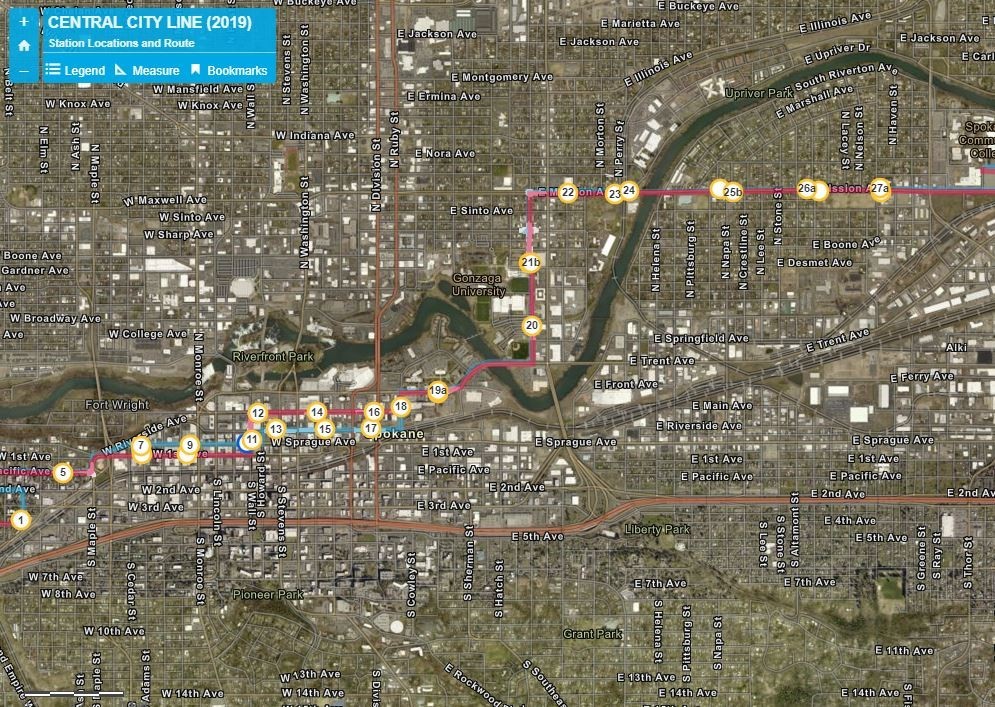Spokane Cultural Trail: Looking to make a trail of bread crumbs out of Spokane stories
Sunday, July 26, 2020

(as reported by Shawn Vestal in The Spokesman-Review)
What if Spokane did a better job of telling its stories?
The histories of our most important places? Stories about our regional ancestors? The architectural highlights of our coolest buildings, the location of arts and cultural institutions, the best spots for a view or a cup of coffee – all of what makes us us?
Some enterprising people are working on an idea to thread Spokane’s stories into a pedestrian “cultural trail” downtown that would highlight some of the interesting parts of the city’s past and present.
This trail, which is still in the early stages of discussion and planning, would use signs, art pieces, interactive stations and other “bread crumbs” along the way to encourage visitors and locals to spend more time walking and seeing what the city has to offer.
“What we’re really trying to do is encourage people to walk downtown,” said Julie Sinisterra, a former economic and urban development manager for the Downtown Spokane Partnership who helped come up with the idea and begin building support for it in 2016.
It’s still in the early stages of discussion and planning, and there isn’t a firm timeline. The project will advance in stages, and the idea is to draw funding from public and private sources, as well as grants, and to keep it as low-cost as possible. Sinisterra said it would be nice to have at least part of the trail in place when the new Center City Line is ready to begin operating in 2022.
So far, the trail project has been supported by Spokane Arts, Downtown Spokane Partnership and the Spokane Regional Health District. Melissa Huggins, the executive director of Spokane Arts, gave a presentation to City Council members earlier this month, including many of the design possibilities included in an initial schematic design plan for a first phase of the trail between Washington and Division.
As envisioned now, the entire trail would run from Browne’s Addition to the University District along Riverside, using existing sidewalks and infrastructure. It could include a range of different elements along the way: navigational components painted onto sidewalks or asphalt; guideposts and other way-finding materials directing people to the nearest attractions; “blade” signs attached to light poles telling historical stories or civic facts; art “interventions;” and interactive stations offering various activities.
The trail would also adopt strategies for trying to activate “dead spaces” along the route by adding items of interest or by simply using signs that let people know “if you keep going, there’s another exciting thing up here,” Huggins told council members.
It would be an interesting way to enliven downtown, help visitors experience the city and deepen the sense of place for current residents. It could also help unify the city’s attractions, which may seem disparate and far apart to those who aren’t familiar with them.
“Spokane has a lot of assets but for me, personally, when I have visitors come to town, whether they’re here for a convention or a wedding, and they ask what we should do, it doesn’t seem like Spokane has a super easy, obvious answer,” she said. “I think the cultural trail could be one of those things for Spokane.”
There’s a long way to go before this becomes a reality. Early work on “visioning” and developing schematic designs has been done; the next phase would involve holding community roundtables to discuss what kinds of stories people would like to see included, as well as beginning to identify the design elements that would tie the trail together and finding a name.
Sinisterra and Huggins see the trail as a win-win-win-win – something that has artistic, economic, health and civic benefits. While some parts of it would be clearly more oriented for visitors, such a trail could also be a fun and enlightening part of downtown for those of us who live here but may not be as familiar with our community’s stories as we could be.
“The history of Spokane is a part of all of us,” Sinisterra said. “Understanding where Spokane came from and where it’s going – all of that helps us form our own sense of belonging, our own sense of place.”